You may think that, like sleeping bags, sleeping mats are all pretty much the same, but fact they vary enormously from simple foam rollout mats to highly engineered insulated options for trekking in winter.
When choosing a sleeping mat, you need to consider your body, your sleeping habits, and of course, your budget. Like every area of outdoor gear, the ceiling for both price and quality is staggeringly high. But the floor isn't half bad either – there are some very respectable mats with reasonable prices out there. You just need a group of dedicated campers to try them all out and let you know what's what.

What are the best sleeping mats of 2024?
Best in Test: Near Zero Feather Insulated Inflatable Sleeping Pad
Best Value: Berghaus Ultra-Lightweight Peak Self-Inflating Sleeping Mat
Best self-inflating sleeping mat: Therm-a-Rest ProLite Plus
Best winter sleeping mat: NEMO Tensor Extreme Conditions Mummy Sleeping Mat
A good mat is more than a luxury like a camping chair. For us, it's an essential component of a restful night's sleep. It immensely improves your comfort and insulates your sleeping body from the cold ground. Not to mention, aesthetically, a nice mat can really tie the whole room – or tent – together.
Before you start getting into portable coffee makers and foldable solar panels, invest in a sleeping mat and maybe a camping pillow too. Make sure you've got the right kit to rest and regain energy for the next day's hike.
How we tested these sleeping mats
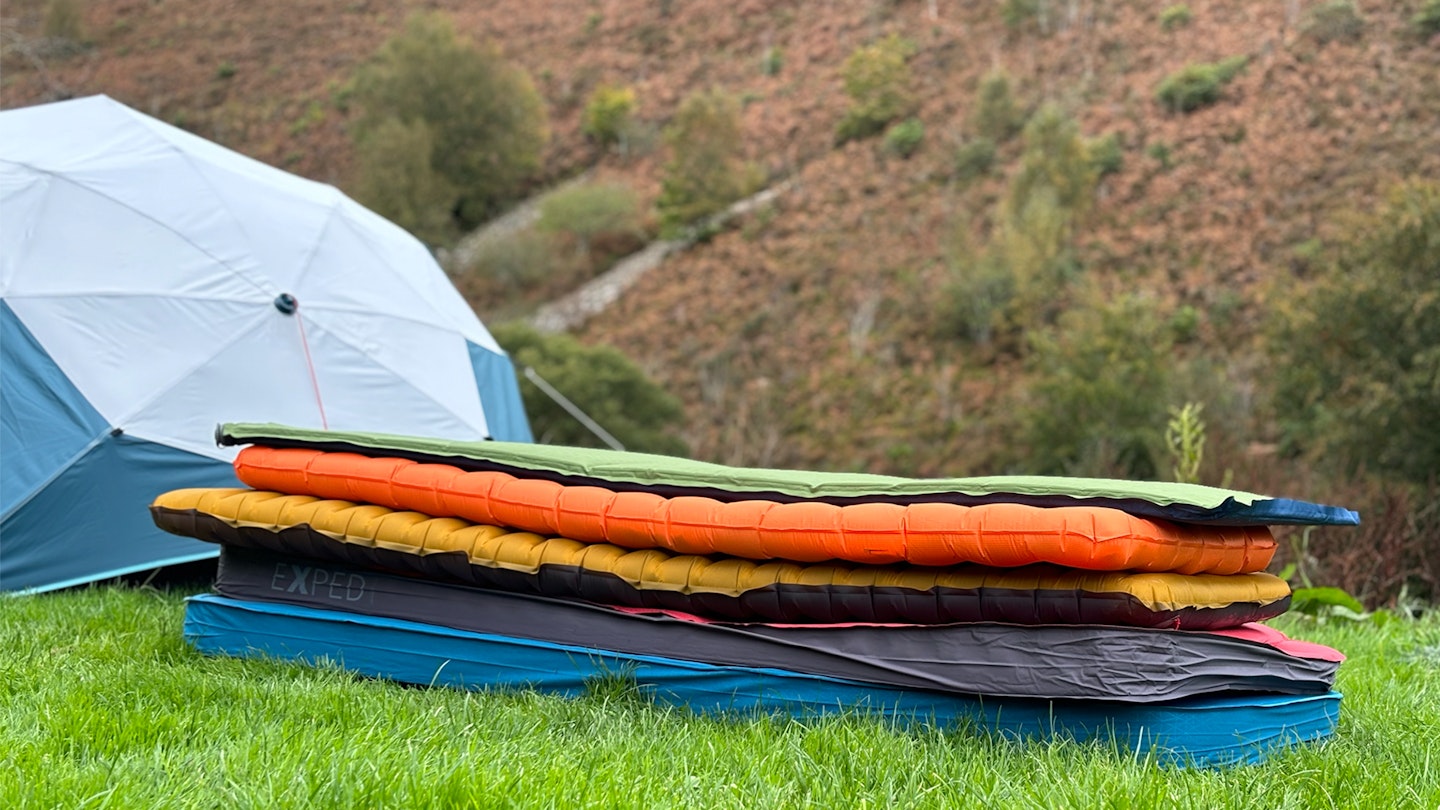
Our team is constantly hitting the hills, either for easy wild camping adventures or mad mountain bivvy expeditions. All of these outings demand the use of sleeping mats, so the ones we test always receive a huge dose of real-world use in order for us to reach our verdicts.
Those recommended here were tested by Ben Weeks and Chris Williams. Ben is our magazine's Gear Editor and has been with Trail and LFTO for over 10 years. Ben is a qualified Mountain Leader and Climbing Instructor. Chris is our Senior Writer on LFTO whose expertise in outdoor gear comes from former roles working for outdoor gear brands and his lifetime's-worth of hiking in his home country of New Zealand.
The best sleeping mats reviewed
Best backpacking sleeping mat
 LFTO
LFTOnearzero.co
We've been using this sleeping mat for nearly a year and it's been tremendous. Near Zero is a reasonably small American outdoor brand that produces excellent value, high-performance kit that is designed to make wild camping and backpacking more accessible to more people.
Its insulated sleeping mat strikes a great balance between comfort and weight. It insulates well and is a good size (186cm is slightly longer than other regular-sized mats).
We liked how compact it is too, despite not being the lightest mat we've tested. So far for us it's held up well and is showing no signs of wear or tear.
Read our full Near Zero backpacking bundle review
Pros
- Impressive warmth-to-weight
- Quite durable
- Fantastic value
- Available in regular and wide
Cons
- Not as lightweight as some rivals
| Dimensions | 186 x 55 x 8cm (M size) |
| Weight | 652g (Regular size) |
| Packed size | 20 x 10cm (Regular size) |
| Material | 20D nylon |
| R-value | 3.7 |
Best value sleeping mat
As a first inflatable sleeping mat this is our pick. It's a sleeping mat we've used several times and have been perfetly comfortable using.
At 650g and packing down to 27 x 14cm it's reasonably compact for a self-inflating sleeping mat, and despite being low cost, is pretty durable too.
That said, it's not the warmest mat for its size (the Therm-a-Rest ProLite Plus below is noticeably warmer) and is best used for late spring through to early autumn.
Pros
- Reasonably lightweight and compact for a self-inflating mat
- Quite durable
- Fantastic value
Cons
- Not the warmest
| Dimensions | 183 x 51 x 3cm |
| Weight | 650g |
| Packed size | 27 x 14cm |
| Material | Nylon |
| R-value | Not stated |
Best backpacking sleeping mat
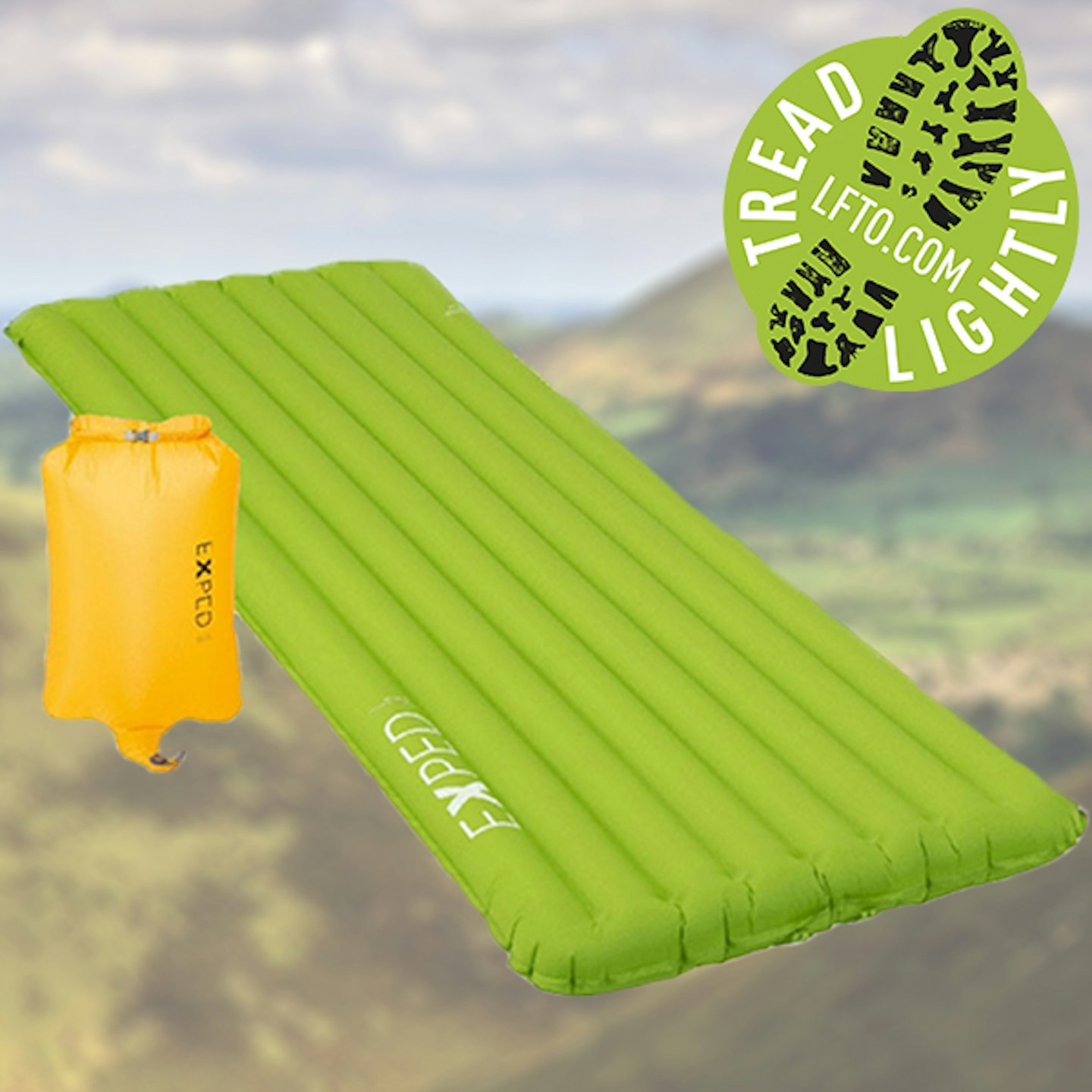
DICK'S Sporting Goods
The lightweight and packable Exped Ultra 3-season inflatable mat has impressed us for its performance and eco-credentials. It's become our go-to mat for most hiking trips. It uses Bluesign-certified synthetic insulation and recycled 20D ripstop polyester fabric; the mat is even certified carbon neutral by myclimate.org.
The Ultra 3R is comprised of head-to-toe air chambers that provide a pliable, cushioned sleeping surface and – more importantly – excellent insulation from the ground. This is thanks to Exped's proprietary Symnat Texpedloft technology. Is that a silly name? Perhaps. But this sleeping mat is seriously good at keeping you at a safe and comfortable temperature throughout chilly nights.
Pros
- Ultralight for long hikes
- Sustainable construction
- Pump bag included for easy inflation
- Available in several sizes and shapes
Cons
- Slightly delicate construction demands care
| Dimensions | 183 x 52 x 7cm (M size) |
| Weight | 465g (M size) |
| Packed size | 23 x 11cm (M size) |
| Material | 20D recycled polyester w/ bluesign-approved 60 g/m² Texpedloft insulation |
| R-value | 2.9 |
Best self-inflating sleeping mat
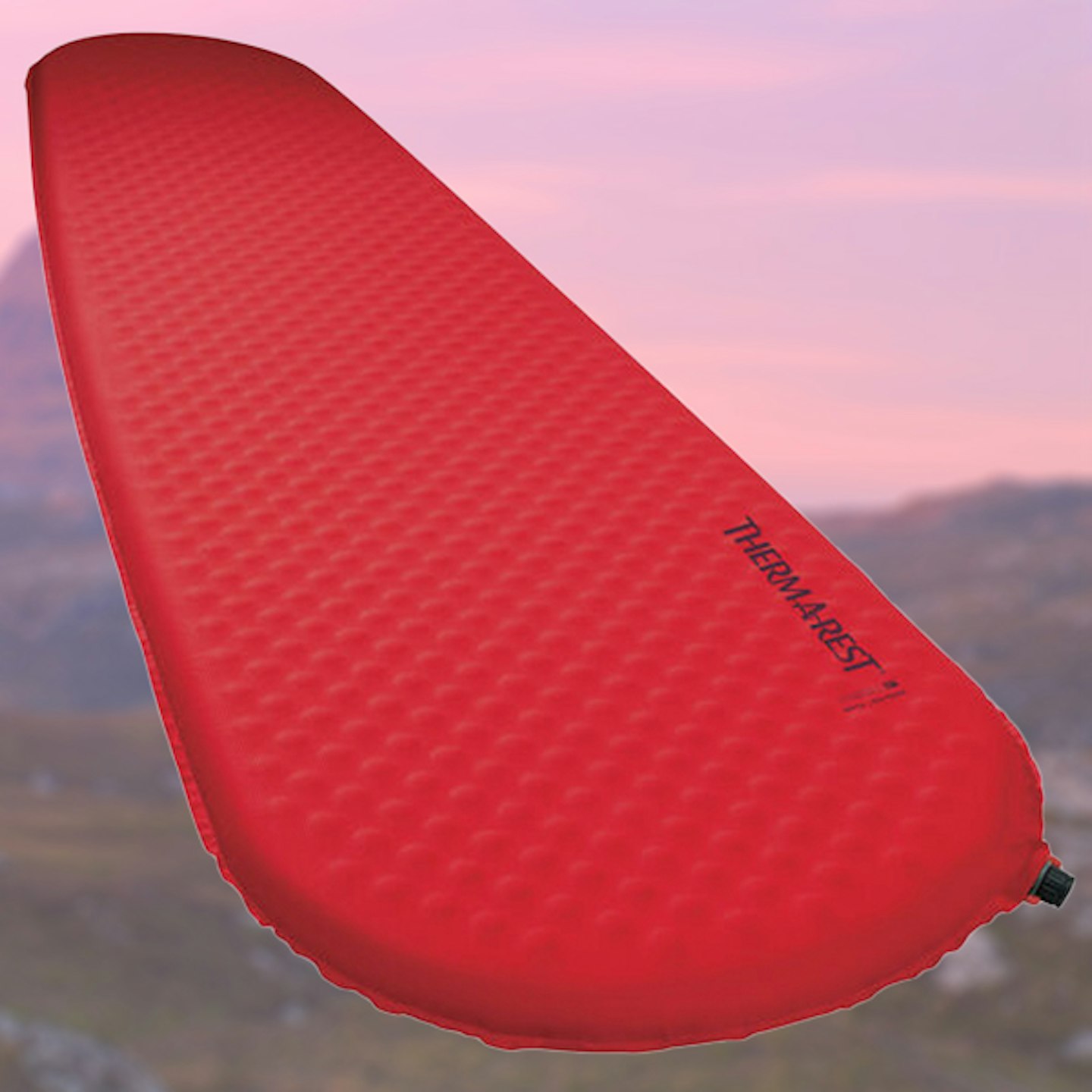
www.cotswoldoutdoor.com
A great combination of weight, pack size and warmth, and at a good price. The Therm-a-Rest ProLite Plus self-inflating might require some manual assistance, but the comfort provided is good for this kind of mat.
The highlight of this mat is the WingLock valve, a high-performance valve with an increased airflow for rapid inflation or deflation. Although, with the ProLite Plus' expanding foam core, you'll only need to access the valve if you want to top off the self-inflation for your ideal level of firmness.
This little bit of wiggle room for personal taste is what makes Therm-a-Rest a go-to choice for experienced campers.
Pros
- Compressible foam allows easy packing
- Efficient design gives good insulation for weight
- Convenient self-inflating function
Cons
- Tapered shape won't suit all campers
- Can still require some manual inflation
| Dimensions | 183 x 51 x 3.8cm |
| Weight | 650g |
| Packed size | 28 x 17cm |
| Material | 50D polyester w/ urethane foam core |
| R-value | 3.2 |
Best winter sleeping mat
 LFTO
LFTOwww.alpinetrek.co.uk
We put this pricey but technical sleeping mat to the test in the Cairngorms during winter. The Tensor Extreme Conditions boasts an impressive R-value of 8.5, making it one of the warmest backpacking mats available. This warmth is achieved with four layers of Thermal Mirror metallised film within Nemo’s Apex baffle design, adhering to the ASTM F3340 standard for accuracy.
Comfort is impressive too with its 9cm deep cushioning, which offers a relatively luxurious sleeping experience uncommon in lightweight mats. Despite its high R-value and thick cushioning, the Tensor EC weighs under half a kilogram, thanks to the lightweight Thermal Mirror film.
The mat is easy to inflate with the Vortex pump sack, taking fewer than four inflations, and deflates quickly with the updated Laylow valve. Its 40D nylon underside is puncture-resistant, while the 20D nylon top provides a soft, quiet sleep surface.
Read our full NEMO Tensor Extreme Conditions Mummy Sleeping Mat review
Pros
- Well insulated
- Deep and cushioned
- Surprisingly lightweight
Cons
- Overkill for most users
| Dimensions | 183 x 51 x 8.9cm (Regular size) |
| Weight | 587g (Regular size) |
| Packed size | 25.5 x 10cm |
| Material | Bluesign-approved 40D nylon base and 20D top |
| R-value | 8.5 |
Best compact sleeping mat
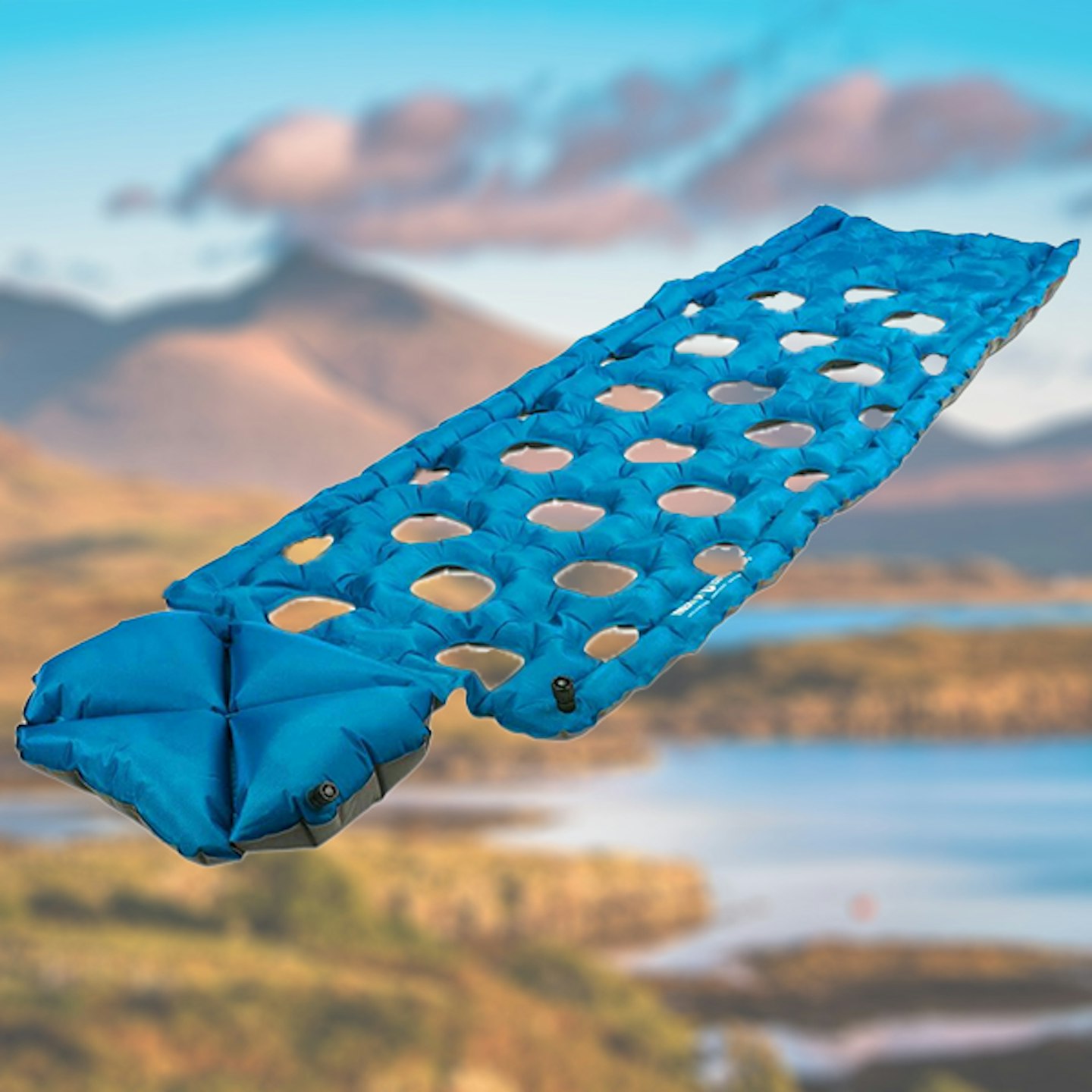
www.alpinetrek.co.uk
Astoundingly lightweight and packable, albeit not the warmest, the Inertia Ozone relies on your sleeping bag to provide most of the insulation, leaving gaps in the frame of the mat in which the bag can loft.
The combination of air and foam makes this a superb regulator for summer camp trips and a fine all-rounder for those who like to keep it ultralight. You won't find a mat that's easier to carry with you, though this does come with a small compromise on comfort.
You may not get the lush padding of the Polarshield, but we think the trade-off is worthwhile on a hot day or a light trek.
Pros
- Ultralight with tiny pack size
- Air pockets create loft for your sleeping bag
- Compatible with Klymit USB Rechargeable Pump
Cons
- Doesn't offer standalone insulation
| Dimensions | 183 x 55 x 4cm |
| Weight | 369g |
| Packed size | 15 x 9cm |
| Material | 75D polyester |
| R-value | Not given |
best budget sleeping mat
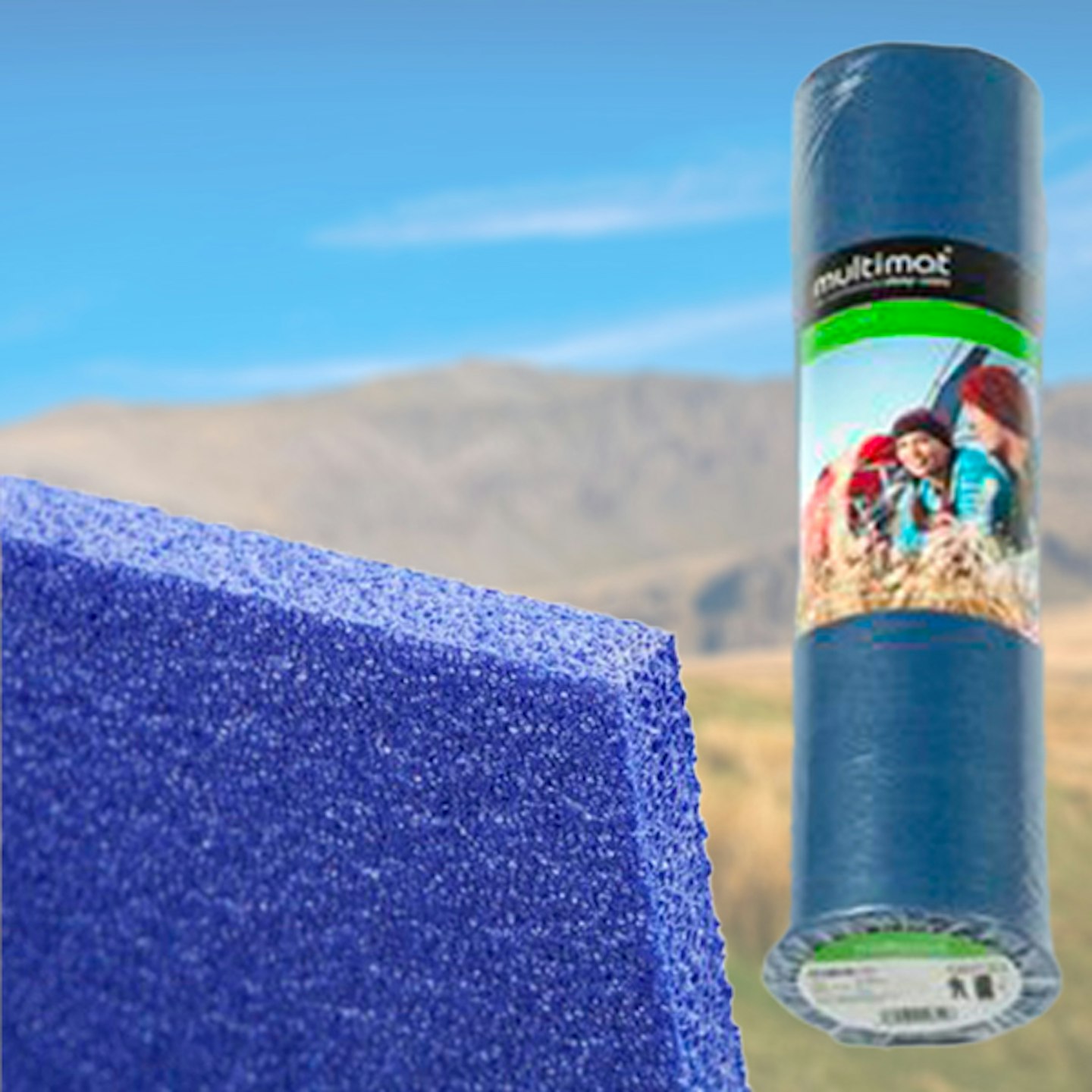
www.cotswoldoutdoor.com
Light, tough and exceptionally budget-friendly, this Multimat Camper 8 mat is suited to warmer conditions and predictably comfortable pitching locations where its lack of cushioning and insulation won't be missed.
Not everyone is pitching up on the north face of Snowdon. In our experience, the majority of pitched tents reside in flat, grassy valleys and meadows. Festivals too. If this sounds like your camping context, then the Multimat Camper 8 is an ideal choice.
Pros
- Fantastic price
- 3-season rating
- Constructed in the UK
Cons
- Less insulation than inflatable mats
| Dimensions | 180 x 50 x 0.8cm |
| Weight | 180g |
| Packed size | 51 x 15cm |
| Material | Foam |
| R-value | Not given |
What to look for in a sleeping mat
Type: Mats fall into one of three categories:
Foam mats are lightweight, cheaper and weather-resistant but provide minimum cushioning and are bulky to carry.
Self-inflating (take this with a pinch of salt) mats pack down small but are not always the most supportive.
Inflatable mats are like compact air beds and tend to be more comfortable, but unless they have some kind of insulation inside, they can be cold.
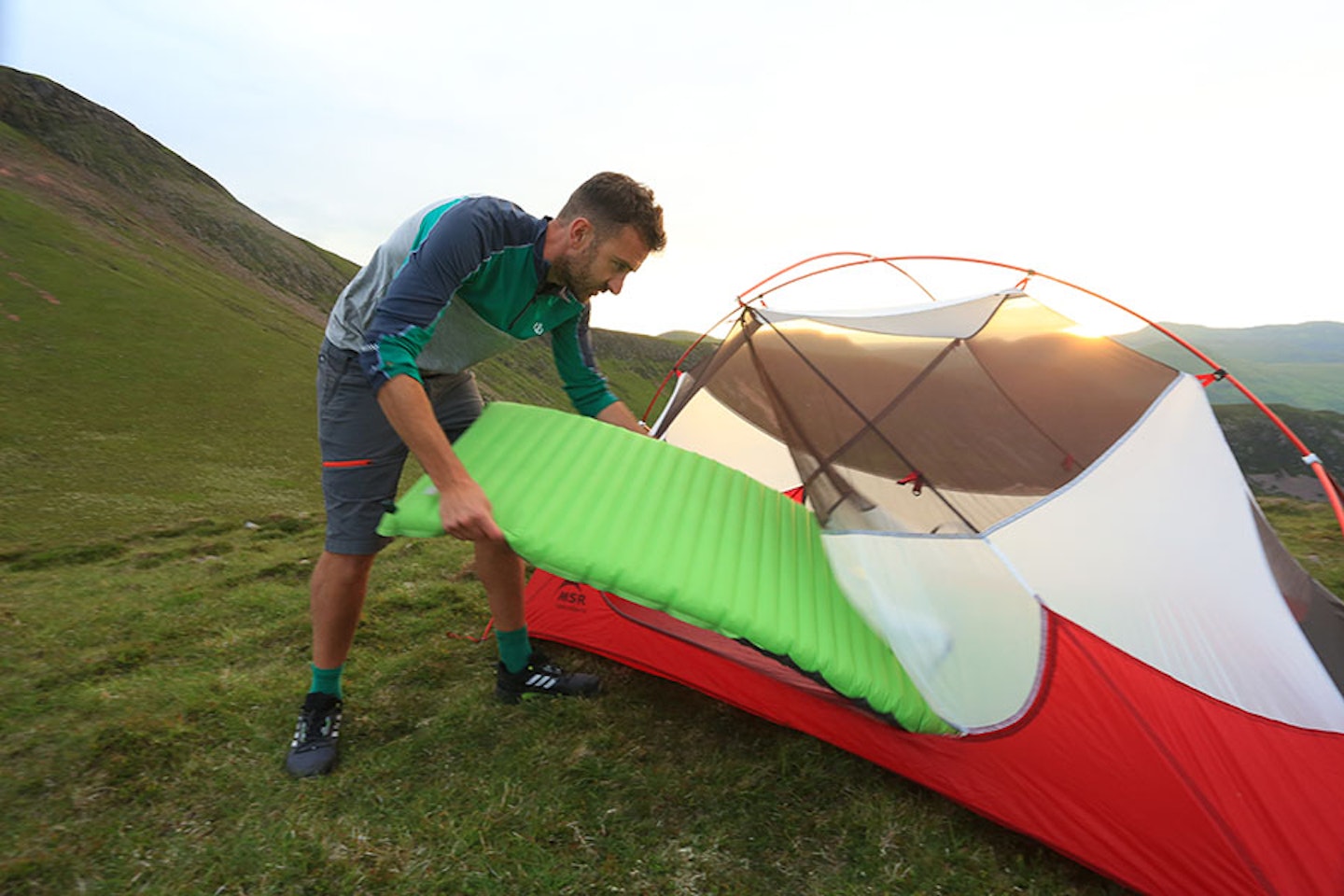
R-Value: R-value is a measure of thermal resistance; the higher the R-value, the warmer the mat. As of 2020, a new industry standard was adopted by most brands to standardise the measurement of R-value – the ASTM FF3340-18 R-value standard.
Weight: A sleeping mat will spend more time being carried in a pack than being slept on, so lighter is better, but toughness can diminish with weight, so there's a balance to be found.
Packed size: Mats with smaller packed sizes are easier to fit into a rucksack along with your other camping gear. Warmer mats tend to be bulkier, so really compact mats are best saved for summer.
Repairability: Self-inflating and inflatable mats become unusable if punctured, so usually come with some kind of repair kit. Foam mats are far more resilient and continue to offer insulation even when wet.

